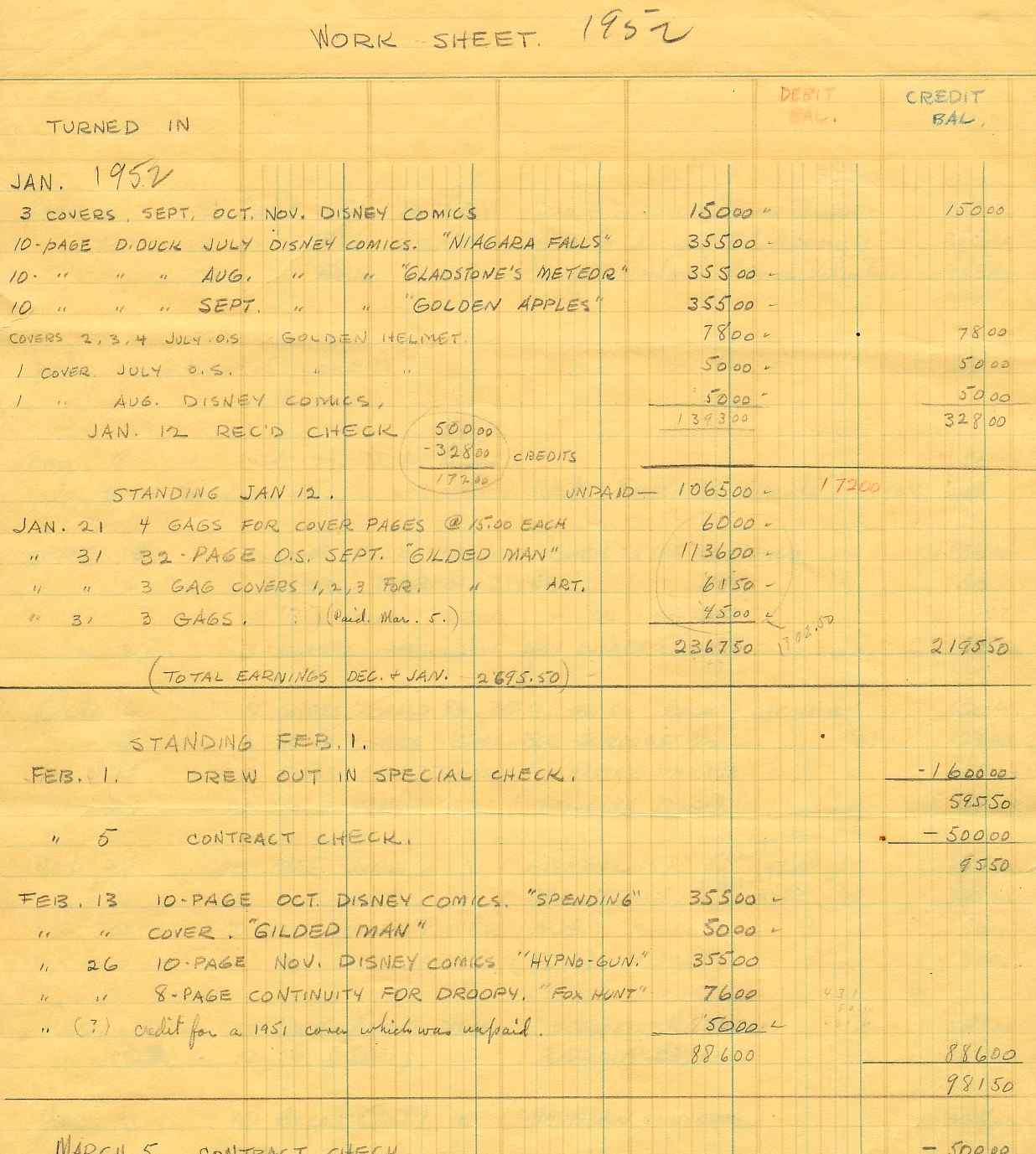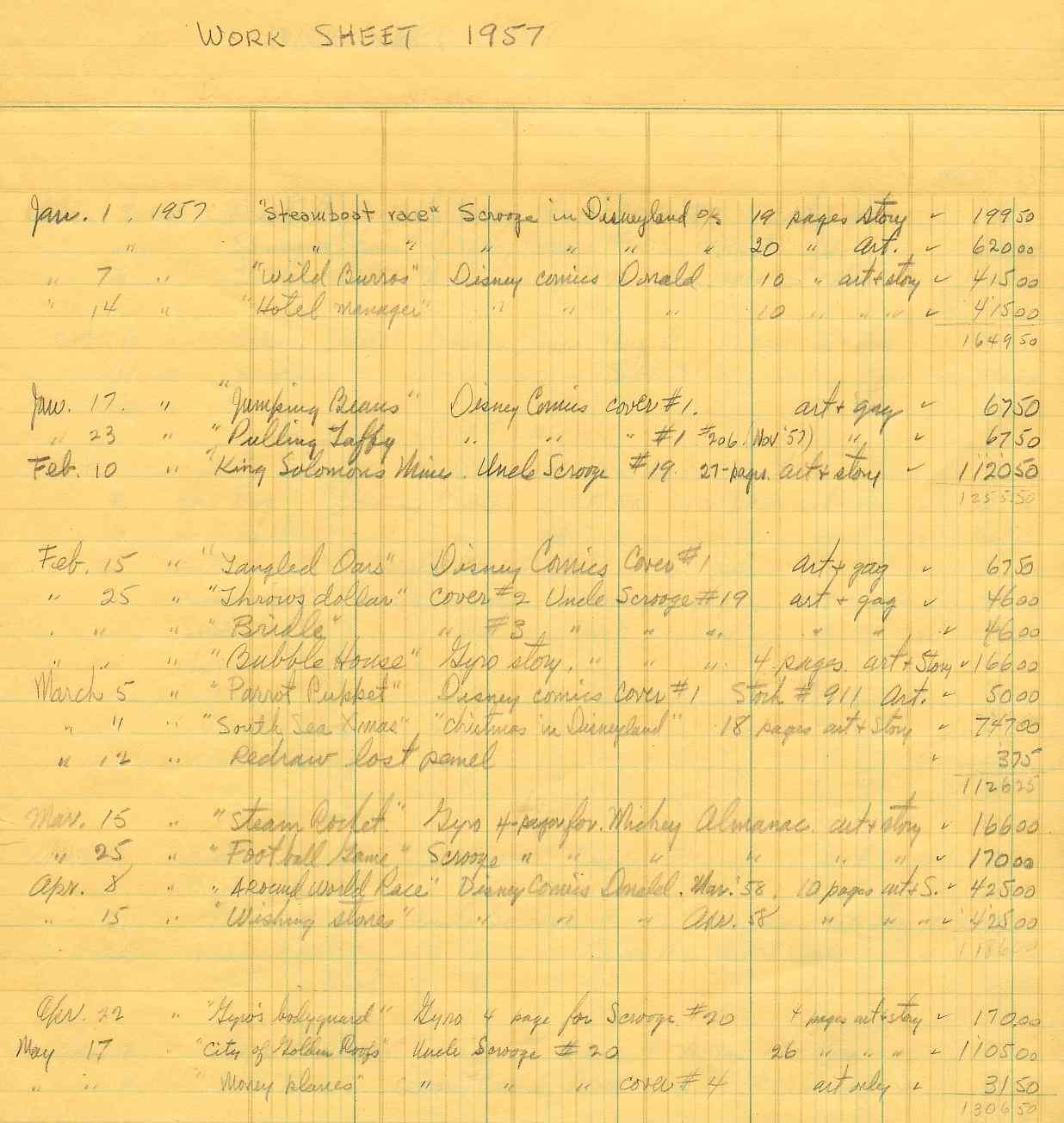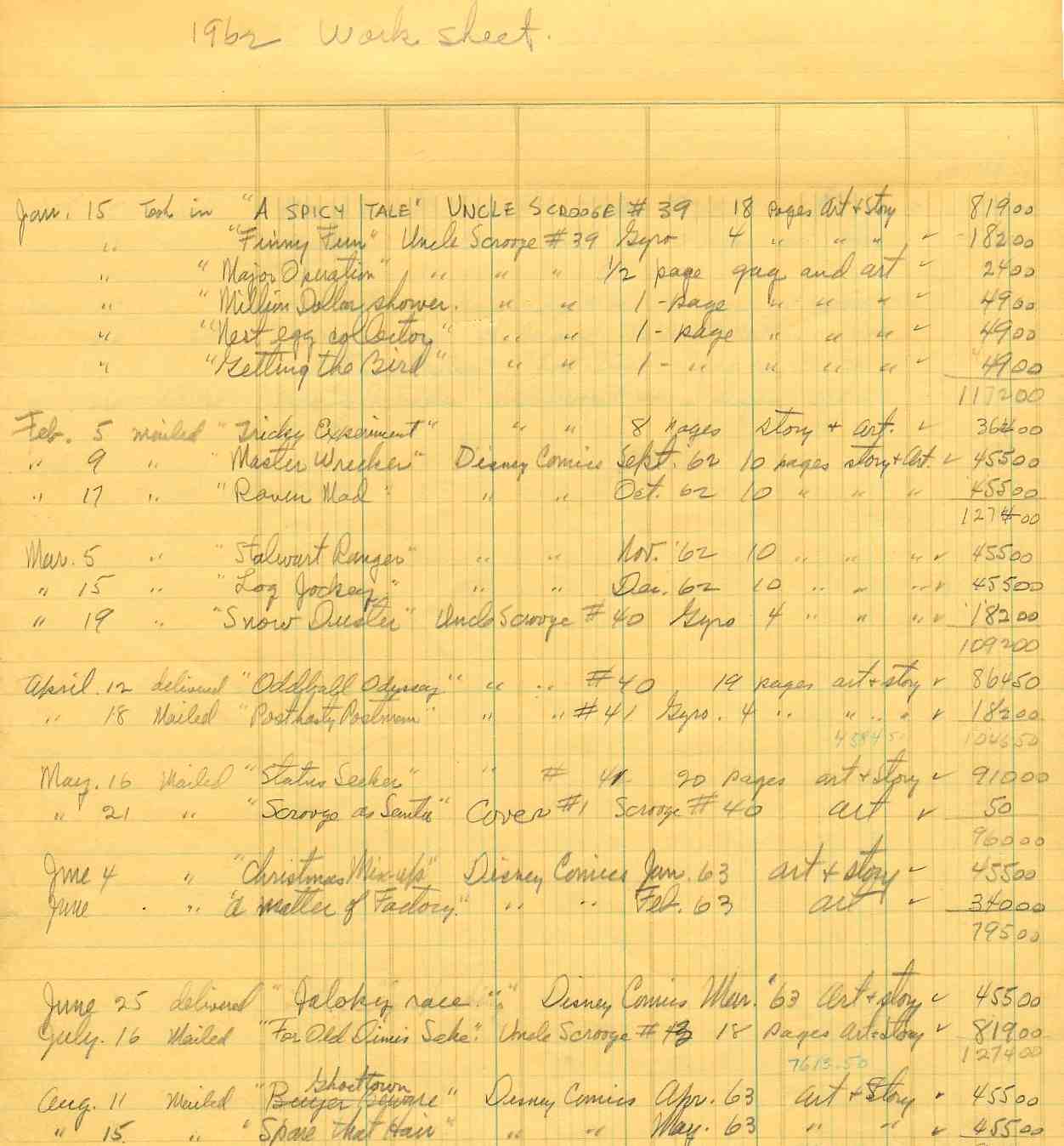

Carl
Barks gave himself several extensive series of workloads when he worked with Disney
related subjects (chiefly stories and paintings), so he had the need to book
them in different ways and with different types of information. This meant that
he, in order to keep track of his work, had to have several statistical
instruments such as ledgers at hand.
Below you
are presented to 3 randomly selected examples (from 1952, 1957, and 1962)
extracted from Barks' so-called Story and Art Ledger, which was only one
of many books used to register the comic book artwork he delivered to his
publisher Western (you can see another collection with more information
HERE).
You may quickly deduct that the sheets are lengthier, as only the first few
months are illustrated, but the photos still give you a fair rendering of Barks'
methodical approach when booking his art.
Disclaimer: When drawing his stories Barks primarily used pencils which is probably why he used pencils to book much of his statistics as well. Unfortunately, time does not agree with pencil strokes as they slowly deteriorate, and the use of yellow sheets are not exactly helpful reproduction-wise, either. So you will have to make do with the technical quality rendered below...
Remark: This page's title can be spelled in one or two words as you prefer. The most commonly used option today tends to be Worksheet, but it is not a mistake when Barks used the phrase Work Sheet.

Comments: The sheets meticulously book
the comic book artwork Barks delivered to his publisher as for dates and
payment. Also, he mentioned the individual stories and covers with small
explanatory descriptions of number of pages and a loose titling of
untitled stories and covers. During the early years Barks also applied
entries for cheque payments from Western (which was done much more
accurately, and in greater detail in some of his other ledgers!). |

Comments: Now Barks are made aware of
the coming issue numberings for the long adventure stories and he is
slowly beginning to add them to his bookings. But the 10-pagers and covers
are another matter; they got more scattered time-wise, as they were
published at irregular intervals unknown to Barks (and mostly the
publisher as well) until the last moment... |

Comments: For years and until 1966 -
when he officially retired from comic book work - Barks would
frequently visit the publishing house in order to personally hand over the
production of more stories and covers instead of mailing them.
Correspondingly, Barks sometimes made remarks to that effect in connection
with the dates. |
http://www.cbarks.dk/THEWORKSHEETS.htm |
Date 2015-12-24 |